Depending on your tank inhabitants and preference, gummy bundles on the glass can be seen as either delightful or alarming. It could be jovial news if you’re interested in keeping and breeding snails. However, on the alarming flipside, most freshwater snail species are considered invasive and can ruin your tank’s ecosystem if left unrestrained.
Depending on the species and even the development stage, the visual cues of the snail eggs vary from translucent to bright pink and small to the size of a pea. Moreover, Some snail eggs are so small that they are often mistaken for tank debris or parasites, leading to their unintentional neglect or elimination.
In this article, we’ll discuss the species-specific characterization of snail eggs, the causes of their unannounced presence, and control strategies.
Table of Contents
Causes of Snail Eggs Presence in Your Tank
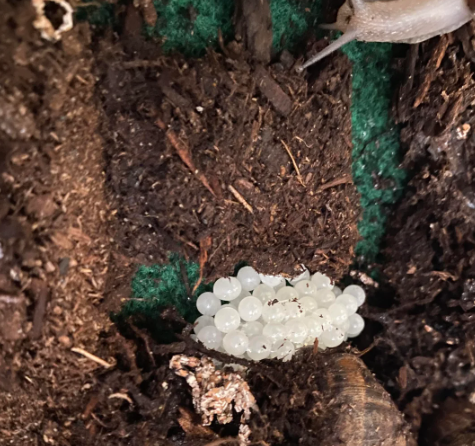
If snails don’t inhabit your tank or you do not actively breed them, snail eggs in the tank demand excogitation. Pondering about the issues is critical to prevent any future invasions or to avoid undesirable outcomes (overpopulation) as an inexperienced breeder. Here is how snail eggs may emerge in your tank:
Introduction of snails via plants or decorations
Although most snails are considered pests in aquariums, they help build the ecosystem that we aquarists strive for. But, some snail species, such as Pond Snails and Malaysian Trumpet Snails, are known to quickly populate the tank to the brink of ecological breakdown.
Owing to their invasive nature, these snails (particularly in egg form), hitchhike to different water bodies, including your tank, via plants and decorations that you buy from pet stores. Being smaller in the juvenile stages, they can easily hide under the substrates and inside the decorations before emerging as parents and grandparents.
Furthermore, the majority of snails are hermaphrodites, meaning they can asexually reproduce and lay fertile eggs without a partner.
Overfeeding and its effects on snail reproduction
As a snail keeper, eggs on the tank glass might be auspicious, but the overproduction of snails can disrupt the tank ecosystem and rapidly strip away nutrients from the tank—depriving other inhabitants. Overfeeding is among the major causes of snail overpopulation. Your snail communities can’t sustain a large amount of life without surplus food sources.
In contrast, snails that accidentally end up in your tank can overpopulate the ecosystem relying on the surplus supply of food.
Lack of natural predators
In aquariums, certain fish and invertebrates are known to be natural predators of snails. This includes Assassin Snails, Yoyo Loaches, and Pufferfish. These species prey on both snail and snail eggs to ensure their population is kept in check within the ecosystem. Whether you’re a snail keeper or just trying to keep hitchhikers out, introducing natural predators can keep their population under control.
Optimal tank conditions for snail breeding
Snails survive a wide range of tank conditions, including slight fluctuations in temperatures and pH. If your tank conditions are ideal for particular species of snails to survive and thrive, they may lay eggs on the glass to announce the arrival of the next invasive generation.
Assessing the Situation
Before you take drastic action impacting the whole balance of the tank ecosystem, give yourself a few moments to assess the situation and determine the best course of action. Here is how to systematically approach the issue:
Evaluating the extent of the snail egg infestation
As a first step, identify the snail eggs and their species by following the guidelines we provided in the next section. In addition to the ones you found on the glass, they might be clustered on rocks, plants, tank walls, and decorations. While it’s impossible to enumerate all the clusters, you can get a rough estimate of the same. Don’t forget to consider the hidden eggs in the count.
Depending on what you find, get a rough estimate of the extent of infestation by referencing the following guidelines:
- Mild: A few scattered egg clusters (less than 5) indicate a manageable population.
- Moderate: Several clusters (5-10) suggest a growing population that needs intervention.
- Severe: Large numbers of clusters (over 10) or eggs covering extensive surfaces signify a serious infestation that requires immediate action.
Do also check for the adult snails present in the tank. The number of adult snails you see is a good indicator of potential future egg production.
Common Freshwater Snails and Their Eggs
Here is a compilation of characteristics of common freshwater snail eggs. Refer to this guideline when required:
Mystery Snail
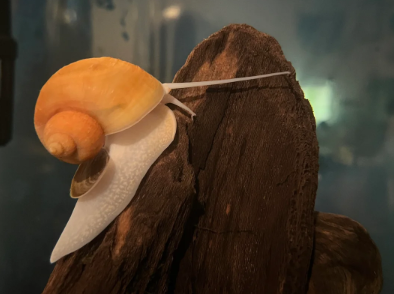
| Characteristics | Specification |
| Scientific Name | Pomacea bridgesii |
| Size | Approximately 2-3 mm per egg. |
| Color | Initially pink or orange, turning darker as they develop. |
| Shape | Round to oval. |
| Gelatinous Coating / Texture | The eggs are encased in a soft, gelatinous mass that helps protect and hydrate them. |
| Location Preference | Laid above the waterline on hard surfaces such as glass, rocks, or aquarium decor. The eggs are typically laid in clusters, often in shaded or sheltered areas to avoid direct light and predation. |
Nerite Snail
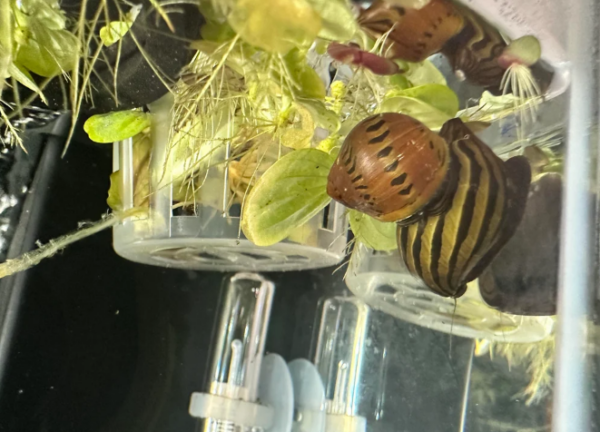
| Characteristics | Specification |
| Scientific Name | Neritina spp. |
| Size | Approximately 1 mm per egg. |
| Color | White |
| Shape | Oval to capsule-shaped. |
| Gelatinous Coating / Texture | The eggs have a hard, calcareous coating, not gelatinous. They are often described as looking like tiny, white grains of rice. |
| Location Preference | Laid on hard surfaces such as rocks, driftwood, and aquarium glass. The eggs are individually adhered to surfaces, rather than being laid in clusters. They can be quite difficult to remove once attached. |
Ramshorn Snail
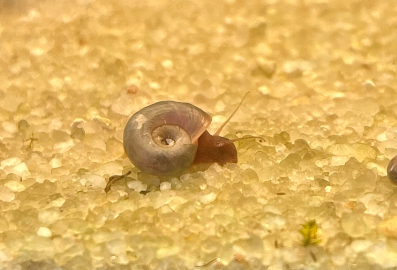
| Characteristics | Specification |
| Scientific Name | Planorbidae family |
| Size | Approximately 1-3 mm per egg capsule, with each capsule containing multiple eggs. |
| Color | Transparent to slightly opaque, with visible developing embryos inside. |
| Shape | The capsules are round to oval in shape. |
| Gelatinous Coating / Texture | The eggs are encased in a gelatinous mass that is somewhat sticky, providing protection and moisture. |
| Location Preference | Laid on various surfaces within the aquarium, such as glass, plants, decorations, and sometimes the substrate. The egg capsules are typically attached in clusters, often on the underside of leaves or other shaded areas to avoid predation and direct light. |
Malaysian Trumpet Snail
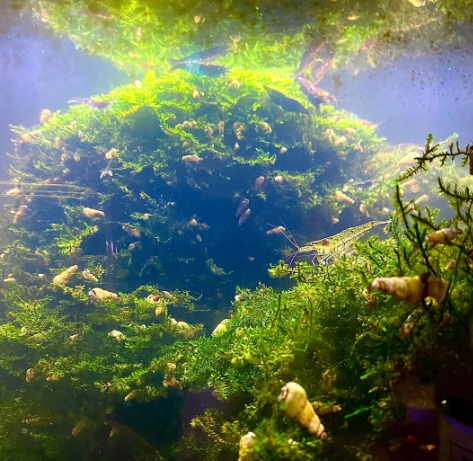
| Characteristics | Specification |
| Scientific Name | Melanoides tuberculata |
| Size | Malaysian Trumpet Snails are live-bearers and do not lay eggs |
| Color | NA |
| Shape | NA |
| Gelatinous Coating / Texture | NA |
| Location Preference | Malaysian Trumpet Snails give birth to fully formed young rather than laying eggs. The young are often released into the substrate, where they can immediately start burrowing and feeding. |
Apple Snail

| Characteristics | Specification |
| Scientific Name | Pomacea spp. |
| Size | Approximately 2-3 mm per egg. |
| Color | Typically pink, orange, or bright red when freshly laid, turning darker as they develop. |
| Shape | Round to oval. |
| Gelatinous Coating / Texture | The eggs are not gelatinous; they have a hard, calcareous coating to protect them from desiccation and predators. |
| Location Preference | Laid above the waterline on hard surfaces such as glass, rocks, plants, or other aquarium decorations. The eggs are laid in clusters, often in a sheltered or shaded location to avoid direct light and reduce predation risks. These clusters can be quite large, containing hundreds of eggs. |
Assassin Snail
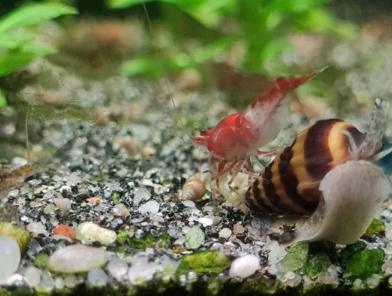
| Characteristics | Specification |
| Scientific Name | Clea helena |
| Size | Approximately 1-2 mm per egg. |
| Color | Transparent to yellowish with visible developing embryos inside. |
| Shape | Oval to rectangular capsules. |
| Gelatinous Coating / Texture | The eggs are contained within a transparent, gelatinous capsule that is somewhat sticky and adheres to surfaces. |
| Location Preference | Laid individually on hard surfaces such as aquarium glass, rocks, driftwood, and plant stems. These eggs are not laid in clusters but rather spaced out, often in hidden or sheltered spots within the aquarium to protect them from predators. |
Immediate Actions to Take
Aquarists generally don’t appreciate having unwelcomed snail eggs in their tanks. However, keeping some can help maintain a clean and balanced ecosystem. For those who prefer not to, here’s how to take immediate action.
Manual removal of snail eggs
Manual removal is the most direct way to control a snail egg infestation. You’ll need a net, tweezers, a siphon hose, and a container for the eggs. The container ideally is one you can empty outside or into a separate tank for elimination.
Turn the filter off before the procedure to prevent the eggs from being sucked into and potentially hatching elsewhere. However, you don’t need to turn off the bubblers. Snails typically lay eggs in clusters on various surfaces. Carefully scan rocks, plants, driftwood, aquarium walls, and decorations.
For easy-to-reach clusters, on smooth surfaces, use a siphon hose to suck them up to the container gently. Use a fine mesh net to scoop out larger clusters or those on delicate plants. For stubborn clusters, use tweezers to remove them carefully.
Don’t crush the eggs into the tank as some of them can still hatch. Continue monitoring your tank for new egg clusters.
Adjusting feeding habits to control snail population
This is the most critical step to prevent further infestation. Start by feeding your fish less than you usually do. Observe their behavior. They should consume all the food within a few minutes. If not, gradually reduce the quantity further. Aim to find the sweet spot where your fish are healthy and well-fed, but there’s minimal leftover food for the snails.
Stick to a consistent feeding schedule, ideally once or twice a day. Avoid the temptation to feed them throughout the day, as this creates a continuous food supply for the snails. If possible, try target-feeding your fish. This involves dropping food directly where your fish can consume it. This minimizes the amount reaching the bottom where snails can scavenge for leftovers.
Long-Term Snail Control Strategies
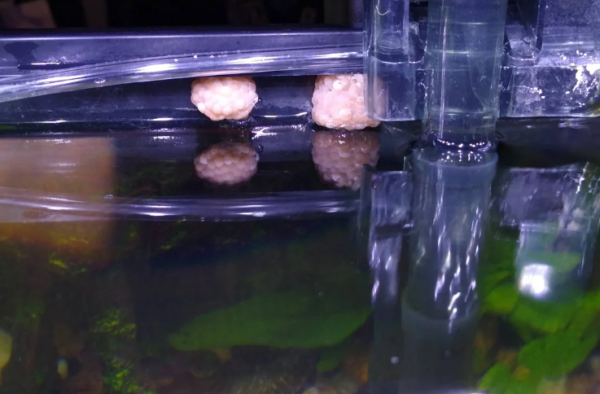
Here’s a breakdown of various long-term strategies you can implement to manage your snail population in a sustainable and eco-friendly manner:
Introducing snail predators
As mentioned, various snail predators can be introduced to prevent snails and snail eggs from ending up in your tank. Here are a few snail predators that you can keep in freshwater habitats:
- Assassin Snails: These aggressive carnivorous snails specifically target and feed on other snail species, including Bladder Snails and Malaysian Trumpet Snails. However, they might also attack peaceful snails like Mystery Snails.
- Pea Puffers: These small, active fish are known for their excellent eyesight and their fondness for snails. However, they can be aggressive towards other fish and require specific tank conditions.
- Yoyo Loaches: These peaceful schooling fish are excellent algae eaters and will also consume any snails they encounter.
Before introducing any predators, however, always research their compatibility with other tank inhabitants and requirements for water conditions.
Using snail traps
Snail traps are readily available at pet stores and are relatively inexpensive. They typically consist of a baited container with a small opening that allows snails to enter but makes it difficult for them to escape. Use baits like blanched vegetables, sinking fish food, or even a small amount of crushed algae wafer to lure the snails in.
Place the traps strategically in areas with high snail activity. Check them regularly and empty them of captured snails. However, snail traps may not be effective for all snail species and might not address the underlying reasons, such as overfeeding, for the infestation.
Chemical treatments
Chemical treatments containing copper sulfate or niclosamide are available to kill snails. However, these chemicals should be a last resort due to several drawbacks, including them being harmful to fish and invertebrates, disruptive to tank balance, and ineffectiveness on snail eggs.
Regular tank maintenance and cleaning routines
Perform weekly or bi-weekly water changes to remove excess nutrients and prevent algae growth, a primary food source for snails. During water changes, use a gravel vacuum to siphon the substrate, removing detritus (organic debris) that snails feed on.
Inspecting and quarantining new additions
New plants, decorations, and even fish can introduce unwanted snail eggs or hitchhiking adult snails into your tank. Carefully examine all new plants and decorations for any visible snails or eggs before introducing them to your main tank.
Develop a good practice by setting up a separate tank or container to quarantine new additions for 4-6 weeks. In addition to keeping parasites away, quarantining allows enough time for any snail eggs to hatch and be removed before placing them in the main tank.
FAQs
Yes, snails often lay eggs on aquarium glass, especially near the waterline. This is because the glass provides a smooth, clean surface for the eggs to adhere to. You might also find them on rocks, plants, decorations, or anywhere else in the tank.
Snail eggs are typically small (around pea-sized), round, or oval-shaped structures. They can be clear, translucent white, opaque white, pinkish, or yellowish. Look for them in clusters stuck to various surfaces in your tank.
You may manually remove the snail eggs by using a siphon hose and nets. Predators, like pea puffers and yoyo loaches, may also be introduced to control the snail population. Sometimes, if the underlying reasons are addressed, snail traps work pretty well.
The Bottom Line
Hopefully, you’ll now be able to identify species-specific snail eggs and address the underlying issues effectively. If you choose to keep snails in your tank ensure that you have population control methods in place to keep a balanced ecosystem. But, if you decide to get rid of the snail eggs, follow the proper protocols mentioned in the article to appropriately eliminate them.
No related posts.
